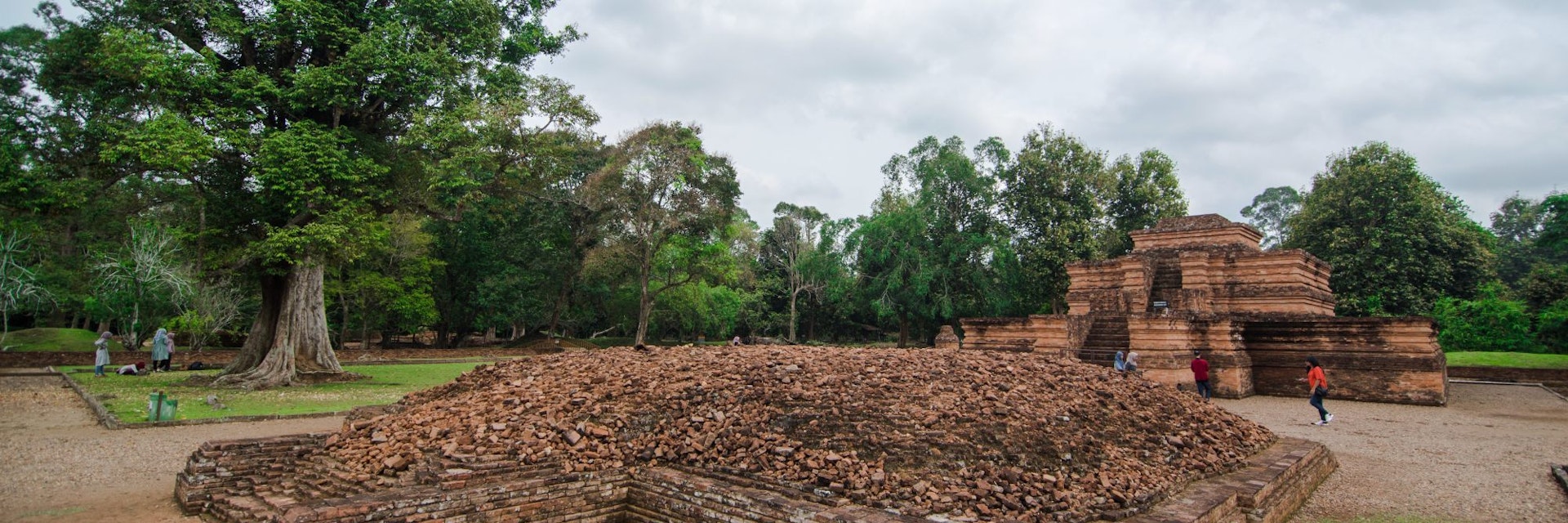This scattering of ruined and partially restored temples is the most important Hindu-Buddhist site in Sumatra. The temples are believed to mark the location of the ancient city of Jambi, capital of the kingdom of Malayu 1000 years ago. Most of the candi (temples) date from the 9th to the 13th centuries, when Jambi’s power was at its peak. Grab a bicycle (per day 10,000Rp) at the entrance to explore the immensely peaceful forested site, marvelling at the temple stonework
The forested site covers 12 sq km along the northern bank of the Batang Hari. The entrance is through an ornate archway in the village of Muara Jambi and most places of interest are within a few minutes’ walk. While you can wander to most of the temples on foot, to get to some of the more outlying western ruins it's best to get a bike. Much of the site still needs excavating and there is some debate as to whether visitors should be allowed to clamber all over the ruins and the restored temples.
Eight temples have been identified so far, each at the centre of its own low-walled compound. Some are accompanied by perwara candi (smaller side temples) and three have been restored to something close to their original form. The site is dotted with numerous menapo (smaller brick mounds), thought to be the ruins of other buildings – possibly dwellings for priests and other high officials.
The restored temple Candi Gumpung, straight ahead from the donation office, has a fiendish makara (demon head) guarding its steps. Excavation work here has yielded some important finds, including a peripih (stone box) containing sheets of gold inscribed with old Javanese characters, dating the temple back to the 9th century. A statue of Prajnyaparamita found here, and other stone carvings and ceramics, are among the highlights at the small site museum nearby. However, the best artefacts have been taken to Jakarta.
Candi Tinggi, 200m southeast of Candi Gumpung, is the finest of the temples uncovered so far. It dates from the 9th century but is built around another, older temple. A path leads east from Candi Tinggi to Candi Astano, 1.5km away, passing the attractive Candi Kembar Batu, surrounded by palm trees, and lots of menapo along the way.
The temples on the western side of the site are yet to be restored. They remain pretty much as they were found – minus the jungle, which was cleared in the 1980s. The western sites are signposted from Candi Gumpung. First stop, after 900m, is Candi Gedong I, followed 150m further on by Candi Gedong II. They are independent temples despite what their names may suggest. The path continues west for another 1.5km to Candi Kedaton, the largest of the temples, which, apart from a staircase guarded by deity statuettes, comprises just the base foundation; it's a peaceful and evocative site. A further 900m northwest is Candi Koto Mahligai.
For centuries the site lay abandoned and overgrown in the jungle on the banks of the Batang Hari. It was ‘rediscovered’ in 1920 by a British army expedition sent to explore the region. The dwellings of the ordinary Malayu people have been replaced by contemporary stilt houses of the Muara Jambi village residents. According to Chinese records, Malayu people once lived along the river in stilted houses or in raft huts moored to the bank.
There is no public transport from Jambi (26km away) to Muara Jambi. You can charter a speedboat (400,000Rp) from Jambi’s river pier to the site. A Grab taxi will cost around 120,000Rp one way, or you can hire an ojek (50,000Rp).

